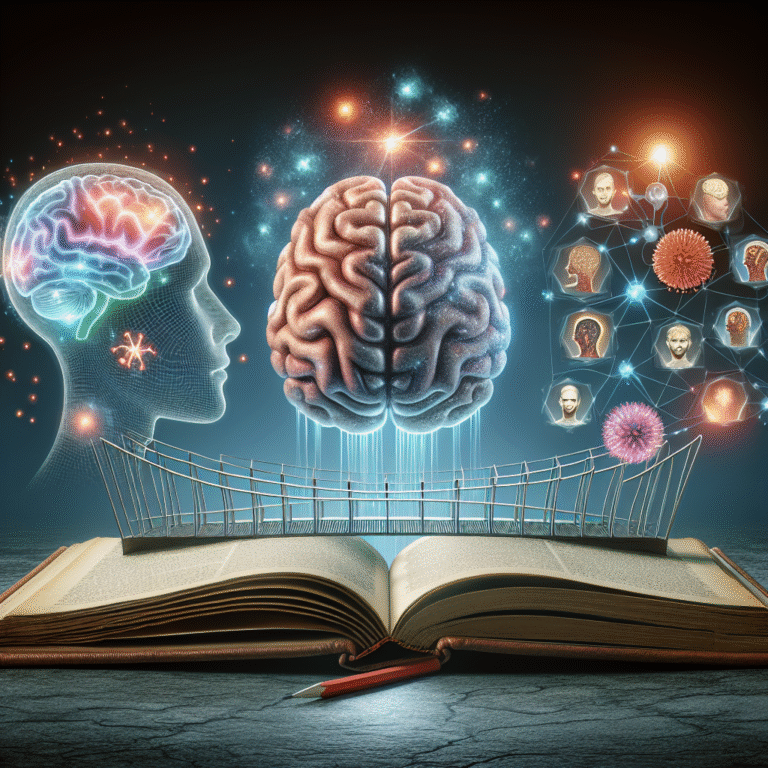
Introduction
Imagine being able to peer into the intricate symphony of your brain’s electrical activity, discovering hidden patterns and gaining invaluable insights into your mental health. This is not the stuff of science fiction; it’s a reality made possible by Electroencephalography (EEG). In a world where mental health issues are on the rise, understanding how our brains operate is more crucial than ever. One of the most groundbreaking tools in this quest is EEG, which provides waves of insight into the depths of our minds.
In this article, we will explore Waves of Insight: The Role of EEG in Understanding Mental Health, diving deep into its implications for diagnosing, treating, and managing mental health conditions. Let’s embark on this enlightening journey together, uncovering the remarkable advances in neuroscience that are shaping the future of mental health care.
The Basics of EEG: Understanding the Technology
What is EEG?
Electroencephalography (EEG) is a non-invasive method used to record electrical activity in the brain. By placing electrodes on the scalp, EEG captures the brain’s electrical signals, which are then analyzed to identify various mental states, ranging from relaxation to intense focus and even different states of anxiety or depression.
How Does EEG Work?
Waves of insight from EEG are generated through the detection of brain waves, which can be categorized into different types based on frequency:
- Delta waves (0.5-4 Hz): Associated with deep sleep.
- Theta waves (4-8 Hz): Linked to light sleep, relaxation, and creativity.
- Alpha waves (8-12 Hz): Emerge during calm, relaxed consciousness.
- Beta waves (12-30 Hz): Indicative of active thinking and alertness.
- Gamma waves (30 Hz and above): Related to high-level cognitive functioning.
These waves reflect the brain’s electrical activity and can provide waves of insight: the role of EEG in understanding mental health, particularly in identifying real-time brain states that are correlated with various mental health disorders.
The Impact of EEG in Diagnosing Mental Health Disorders
Case Study 1: Identifying ADHD
A compelling case study revolves around a young boy diagnosed with Attention Deficit Hyperactivity Disorder (ADHD). Using EEG technology, researchers observed increased theta waves and decreased beta waves, indicating a state of inattention. By understanding these patterns, clinicians were able to tailor behavioral interventions that aligned with the child’s unique brainwave patterns. This case exemplifies waves of insight: the role of EEG in understanding mental health, illustrating how brainwave analysis can enhance diagnostic accuracy.
Analysis
This case reveals how EEG can go beyond subjective assessments, providing quantifiable data that supports the clinical diagnosis of ADHD. By illustrating the brain’s dynamics, EEG contributes to more personalized treatment plans, ultimately improving outcomes.
Case Study 2: Mapping Depression
Another fascinating application of EEG is in understanding depression. In controlled studies, volunteers suffering from depression have shown distinctive wave patterns—particularly increased slow wave activity in the frontal lobes. This insight has paved the way for novel treatment approaches, such as the use of neurofeedback therapy.
Analysis
This study underscores the waves of insight: the role of EEG in understanding mental health by demonstrating how EEG can illuminate the underlying neurophysiological changes in depression. The information gleaned from these recordings not only aids in diagnosis but also serves to shape effective interventions.
EEG in Therapeutic Interventions
Neurofeedback: Harnessing EEG for Healing
One revolutionary application of EEG technology is neurofeedback, which trains individuals to alter their brain activity consciously. This method has shown promising results for treating various conditions, including anxiety, PTSD, and insomnia.
How Neurofeedback Works
Participants are shown real-time EEG readings on a screen, allowing them to visualize their brain activity. By engaging in mental exercises aimed at producing desired EEG patterns, they can learn to reduce anxiety levels or enhance focus. The EEG becomes a tool for self-regulation, providing waves of insight: the role of EEG in understanding mental health as individuals gain direct feedback on their mental state.
Case Study 3: Success with Neurofeedback in PTSD
Consider the case of a veteran struggling with post-traumatic stress disorder (PTSD). Through a neurofeedback program based on EEG data, he learned to shift his brain wave patterns towards a more balanced state. Over months of sessions, his symptoms significantly decreased, illustrating how EEG can inform therapeutic practices effectively.
Analysis
The success of this case illustrates the transformative potential of utilizing waves of insight: the role of EEG in understanding mental health through neurofeedback. It shows that when patients engage with their brain activity, they can achieve better control over their mental health challenges.
Exploring Future Uses of EEG in Mental Health
The Potential for Early Intervention
EEG technology offers the possibility of detecting deviations from typical brainwave patterns that may signal the onset of mental health issues before symptoms emerge. For example, research is exploring how EEG can identify at-risk individuals—those who have a family history of anxiety or depression—allowing for early interventions.
Case Study 4: Predicting Mood Disorders
In a longitudinal study, EEG patterns were monitored in adolescents over several years. Researchers discovered that specific wave patterns were effective predictors of mood disorders, allowing for timely therapeutic interventions and support. This reinforces the waves of insight: the role of EEG in understanding mental health, emphasizing the importance of precognitive awareness in managing mental health proactively.
Analysis
This study highlights the revolutionary potential of EEG in preventive mental health care. By catching emerging patterns early, clinicians can intervene before conditions develop fully, leading to more effective management strategies.
EEG in Research and Development
Understanding Cognitive Decline
EEG is also gaining traction in research surrounding cognitive decline. By studying the wave patterns of older adults, scientists can identify changes that may indicate early stages of Alzheimer’s disease or dementia.
Case Study 5: Cognitive Testing in Seniors
Research has shown that individuals with early cognitive impairment exhibit distinct EEG signatures. By tracking these patterns, researchers can not only improve diagnostic tools but also tailor cognitive interventions aimed at preserving mental health as individuals age.
Analysis
This case sheds light on the potential of EEG to contribute significantly to geriatric mental health. It embodies waves of insight: the role of EEG in understanding mental health by illustrating how brain activity monitoring can help maintain cognitive function in aging populations.
Conclusion
As we’ve explored, waves of insight: the role of EEG in understanding mental health is shaping the future of mental health care in remarkable ways. From enhancing diagnostics to enabling personalized interventions, EEG technology is paving the way for a deeper understanding of our mental states.
The capacity to visualize and interpret our brainwave patterns sheds light on hidden aspects of our mental health, offering hope to millions suffering from various disorders. As the field of neuroscience expands, and technologies like EEG become more refined and accessible, we have the opportunity to revolutionize how we think about and care for mental health.
Actionable Insights
- Educate Yourself: Stay informed about EEG and its role in mental health. Understand how brainwave patterns can influence your emotional and cognitive well-being.
- Seek Help: If you or a loved one struggles with mental health issues, consider discussing EEG-based assessments or treatments with a healthcare professional.
- Engage in Neurofeedback: If available, look into neurofeedback programs that utilize EEG technology to support mental health improvement.
FAQs
1. What conditions can EEG help diagnose?
EEG is useful in diagnosing conditions such as ADHD, anxiety disorders, depression, epilepsy, and sleep disorders.
2. Is EEG testing safe?
Yes, EEG is a non-invasive procedure and is generally considered safe with no known risks.
3. How long does an EEG test take?
An EEG test usually takes about 30 minutes to an hour, depending on the nature of the assessment.
4. Can I use EEG at home?
Yes, several consumer-grade EEG devices are available for home use, particularly for neurofeedback purposes. However, professional medical advice is recommended for interpreting results.
5. How effective is neurofeedback in therapy?
Neurofeedback has shown promising results in clinical trials for various mental health conditions, though individual outcomes may vary. It’s advisable to consult a healthcare provider for personalized recommendations.
By understanding Waves of Insight: The Role of EEG in Understanding Mental Health, we can unlock a transformative approach to mental health care, paving the way for a brighter future grounded in the science of the mind.

















